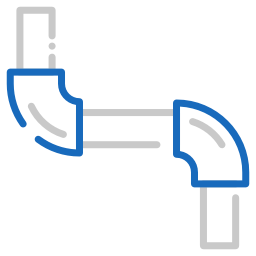Radon Testing
Testing Radon Levels in Your Establishment
What is radon gas and why is it a health concern?
Radon is a colorless, odorless, tasteless gas that can enter your home undetected and cause detrimental health effects such as lung cancer. According to the US Environmental Protection Agency (EPA) and the Surgeon General's Office, inhalation of elevated radon gas accounts for 20,000 deaths per year and is the second leading cause of lung cancer. With this being said, radon gas can be very harmful to our health if it is entering your home.
Radon gas can be found in any structure
including newly built homes, homes over 100 years old, commercial buildings, apartment buildings, townhomes, schools, etc. Some areas are more likely to have radon gas compared to other areas, but radon levels will vary from house to house. The only way to know if your home has dangerous levels of radon gas is to have your home tested.
EPA recommends that a home should be mitigated with a radon reduction system when levels are 4.0pCi/L. or above. Zone 1 areas have the highest average of radon gas while zone 3 areas have the lowest levels of radon gas, but don't let this fool you. Zone 3 areas still have homes that produce dangerous levels of radon gas. So instead of questioning or worrying about radon gas in your home, contact Lucas Contracting today for a free, no-obligation quote to have your home tested or mitigated.
Now with an understanding of what Radon is and its health effects, we can now move to the next step:
Determining if your home has elevated levels of radon. There are multiple devices designed specifically to test your home for radon, including devices where a homeowner can test their own home. The most reliable way to test your home is to contact a Professional Radon Measurement Provider such as Lucas Contracting, LLC. The professionals will assure test placement follows all protocols set by the EPA Guidelines. Professionals also have access to equipment that will give very accurate and trustworthy readings.
Now with an understanding of what Radon is and its health effects, we can now move to the next step:
Determining if your home has elevated levels of radon. There are multiple devices designed specifically to test your home for radon, including devices where a homeowner can test their own home. The most reliable way to test your home is to contact a Professional Radon Measurement Provider such as Lucas Contracting, LLC. The professionals will assure test placement follows all protocols set by the EPA Guidelines. Professionals also have access to equipment that will give very accurate and trustworthy readings.
The machines used for testing by professionals
can give hourly readings, temperature readings, barometric pressure readings, and humidity readings, which can be very helpful for mitigation purposes because all those readings can affect the overall average of radon gas in your home. These machines are also equipped to have results back within hours. The only downfall with these great machines is the cost of operation.
Professional radon testing can cost anywhere between $100.00 and $200.00 per test
so if your budget doesn't allow for this type of testing, no worries. Radon test kits are sold over the counter at local hardware stores such as Lowe's or Home Depot. The test kits are inexpensive and come with complete instructions from deploying the test to mailing the test into the lab. At home tests, are an accurate way to measure radon levels if test instructions and testing protocols are followed.
